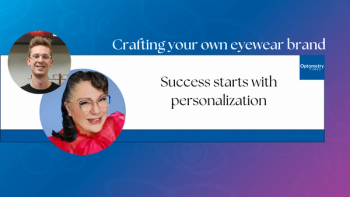
ARVO 2025: OCT-based marker for accommodative effort in presbyopes
Susana Marcos, PhD, outlines a presentation she gave at ARVO 2025 on a unique utilization of optical coherence tomography.
Susana Marcos, PhD, sat down with Optometry Times to discuss research that she presented at ARVO 2025 focusing on optical coherence tomography (OCT) markers for accommodative effort in presbyopes. The study utilized a custom-developed OCT technology specifically designed for high-speed, 3-dimensional imaging of the anterior segment of the eye. The research examined 3 groups of presbyopes: early, middle, and advanced, further subdivided into emmetropes and myopes. The primary goal was to identify how different parameters of the eye change during accommodative effort across these groups. Key findings revealed 3 primary parameters that change significantly during accommodation: lens thickness, anterior chamber depth, and pupil size.
"Over more than 100 years, scientists have been trying to understand the onset of presbyopia, how it progresses all the time, but also to learn more about accommodation," said Percy Lazon de la Jara, director of Research Programs for CooperVision and the paper's coauthor. "There have been hundreds of papers published around this topic. However, Dr Marcos' system gives us an additional hint because of this high technology that she's using to try to understand what previous studies couldn't find because of not having enough resolution to image the eye or to get images from OCT. So Susana's work is really interesting because she has OCT equipment that can image the front of the eye and the crystalline lens, and we can detect changes on the crystalline lens, movement, how it changed its shape, how it changed the radius, what happened to the pupil and to the anterior chamber of people suffering from presbyopia at different stages of life. So that makes it a really interesting area of research, and it can give us new hints about how the accommodative effort works and how it deteriorates over time."
Notably, the researchers discovered some unexpected results, such as a paradoxical increase in pupil diameter during accommodation. Due to this and other factors like illumination, they concluded that pupil size might not be the most reliable marker for accommodative effort. Lens thickness emerged as the most consistent and reliable marker across all presbyope groups. Even as presbyopia advanced, lens thickness demonstrated systematic changes during accommodative demands. Interestingly, myopes showed more pronounced changes compared with emmetropes, with higher slopes of lens thickness change and faster reaction times in dynamic measurements.
The researchers highlighted potential future applications of their findings, such as developing accommodating lenses or devices that could be triggered by measuring lens thickness. The custom OCT technology allows for unprecedented three-dimensional quantification of the crystalline lens, enabling measurements beyond traditional methods. Beyond this specific study, the OCT technology developed by Marcos has broader potential applications, including:
- Understanding accommodation mechanisms
- Studying lens changes in myopia development
- Assisting in cataract surgery planning
- Estimating intraocular lens positioning
The study represents a significant advancement in understanding accommodative effort and demonstrates the powerful diagnostic capabilities of advanced OCT imaging technologies.
Newsletter
Want more insights like this? Subscribe to Optometry Times and get clinical pearls and practice tips delivered straight to your inbox.
















































.png)


